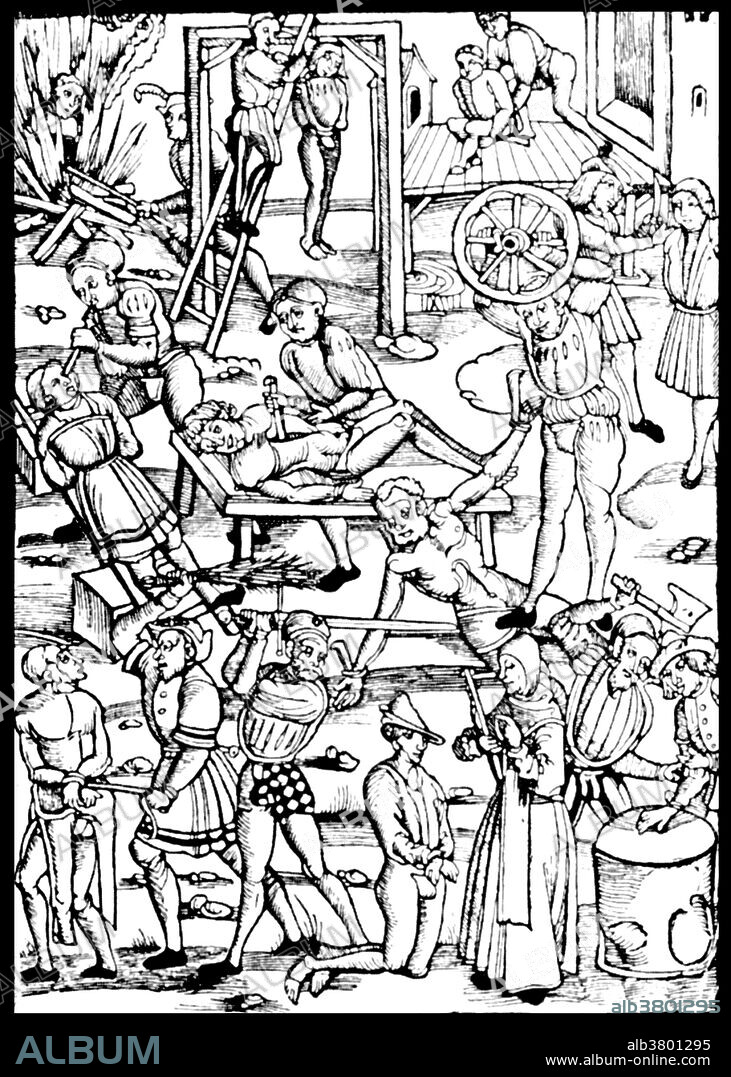alb3801295
Medieval Torture

|
Añadir a otro lightbox |
|
Añadir a otro lightbox |



¿Ya tienes cuenta? Iniciar sesión
¿No tienes cuenta? Regístrate
Compra esta imagen.
Selecciona el uso:

Título:
Medieval Torture
Descripción:
Ver traducción automática
Medieval and early modern European courts used torture, depending on the crime of the accused and his or her social status. Torture was deemed a legitimate means to extract confessions or to obtain the names of accomplices or other information about a crime, although many confessions were greatly invalid due to the victim being forced to confess under great agony and pressure. It was permitted by law only if there was already half-proof against the accused. Torture in the Medieval Inquisition began in 1252 with a papal bull Ad Extirpanda and ended in 1816 when another papal bull forbade its use. Torture was usually conducted in secret, in underground dungeons. By contrast, torturous executions were typically public, and woodcuts of prisoners being hanged, drawn and quartered, and heretics were burned at the stake show large crowds of spectators. Tortures later in the Middle Ages consisted of whipping; the crushing of thumbs, feet, legs, and heads in iron presses; burning the flesh; and tearing out teeth, fingernails, and toenails with red-hot iron forceps. Limb-smashing and drowning were also popular medieval tortures.
Crédito:
Album / NYPL/Science Source
Autorizaciones:
Modelo: No - Propiedad: No
¿Preguntas relacionadas con los derechos?
¿Preguntas relacionadas con los derechos?
Tamaño imagen:
3104 x 4350 px | 38.6 MB
Tamaño impresión:
26.3 x 36.8 cm | 10.3 x 14.5 in (300 dpi)
Palabras clave:
ARTE • CASTIGAR • CASTIGO • COLGANDO • CRUEL • CRUELDAD • DECAPITACION • DECAPITAR • DIBUJO • EDAD MEDIA • EJECUCION • GENTE • GRABADO EN MADERA • HISTORIA • HISTORICO • HOMBRES • ILUSTRACION • INSTRUMENTO TORTURA • MEDIEVAL • METODO TORTURA • MUJERES • OBRA DE ARTE • ORDENAMIENTO JURÍDICO • PERSECUCION • PLANCHA DE MADERA • QUEMADO • RUEDA (INSTRUMENTO DE TORTURA) • S. XVI • SIGLO XVI • TORTURADOR • VERDUGO • VICTIMA • XILOGRAFIA
 Pinterest
Pinterest Twitter
Twitter Facebook
Facebook Copiar enlace
Copiar enlace Email
Email
